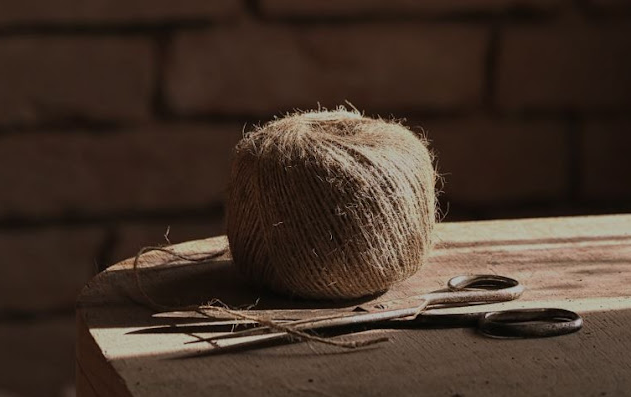Jute is a natural cellulose fibre. It is biodegradable and environment friendly fibre. It can also be recycled.
Important Properties Of Jute Fibre

Figure 1: Jute
1. Length
The reeds of Jute fibre vary from 3 to 14 feet long, depending on the grade, and they show taper from root to end. Thick reeds contain coarse fibre and thin reeds contain finer fibre. It constitutes with ultimate fibres of average length of 2.5mm.
2. Fineness
It is a coarse fibre. Its diameter varies from 6 to 20 microns.
3. Strength
FIbres are not so strong when compared with some other bast fibres but have good tensile strength. Fibres are naturally hard and brittle and break off with abrasion. Resistance to mechanical wear is low and not durable especially on exposure in moisture reduces its strength. Its extension at break is 2%.
4. Color
The best quality fibres are pale white or silvery grey, common qualities are brownish and greenish are inferior, roots are usually darker without any luster. Better quality fibres shows matt and pitted surface with very poor strength.
5. Luster
Better quality fibres have fairly high luster but inferior quality fibres shows matt and pitted surface with very poor strength.
6. Roots
Base portion of the Jute stems is more rigid and has a stronger supporting bark than the rest of the stem. This is due to longer exposure of this part to the action of the sunlight and water. During grade shorting, the root portion are removed by cutting and baled separately known as bale cutting.
7. Cleanliness
Cleanliness of fibre is an essential factor for high grade. Adhering portions of bark, specks sticks etc. are undesirable which affects grading according to their degree of presence.
8. Effect Of Chemicals
Water: Jute is a hygroscopic fibre i.e. it takes in or gives out moisture to its surrounding atmosphere. Under standard testing atmosphere, moisture content value is 12.8% and moisture regain value of this fibre is 14.6%.
Acid: This fibre is damaged by the action of strong acid hence wet processing on Jute fibre is not done in acid medium.
Alkali: It is safe in alkali medium; hence wet treatment is done on alkali medium.
9. Effect Of Biological Agents And Light
It is attacked and damaged by the action of micro-biological agents like bacteria, fungus, moths, insects etc. in worm damp condition. Yellowing of the fibre is observed due to the effect of sunlight.
10. Chemical Composite
Chemical composite of Jute fibre are as follows:
Cellulose: 65.2%
Hemi cellulose: 22.2%
Lignin: 10.8%
Water: 1.5%
Fats and Wax: 0.3%
11. End Uses Of Jute Fibre
Jute is used for making yarn, twine, rope, sacking, cloth, hessian cloth, carpet backing cloth, carpet, mat, wall cloth, shopping bag, and as packing materials.
Recommended Tongda Ring Spinning
TD788 Jute Fabric Weaving Machine


 LANGUAGE
LANGUAGE







